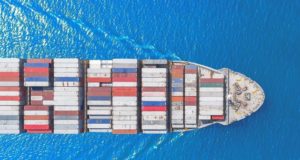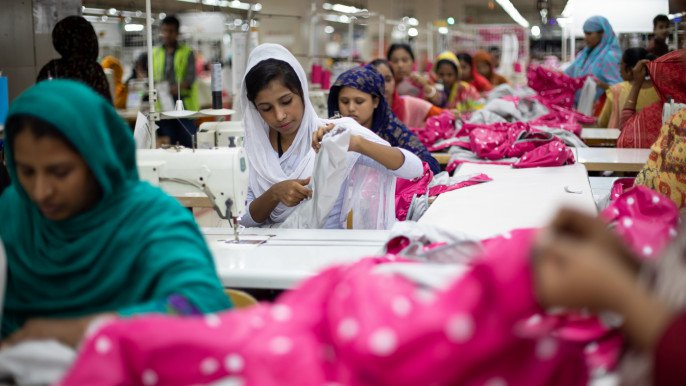Syed Mansur Hashim
Published in The Daily Star on November 28, 2017

Energy efficiency is all the rage these days. A much less talked about issue is water efficiency and sustainability at industrial level. This is where projects like the International Finance Corporation (IFC) PaCT (partnership for cleaner textile) come in because the apparel industry account for about 80 percent of the country’s exports. When we look at World Bank data, industrial pollution contributes to about 60 percent of Dhaka’s pollution and the textile industry is the second largest contributor after the tannery industry. According to IFC, about 200 metric tonnes of wastewater is generated per tonne of fabric.
Water is a finite resource; a message that has not permeated to the bulk of the industry and that is not entirely their fault. Weak regulatory mechanisms coupled with the lack of knowledge that being water efficient can actually raise competitiveness for industry is something that most industries have little knowledge of. The PaCT programme has been engaged with the textile industry since 2013. But it has a much greater role as a facilitator, i.e. bringing together various stakeholders that include textile buyers, factories (management and owners), and policymakers and of course, the financial institutions in an effort to find solutions to attain water sustainability and efficiency.
Over a three-year period, PaCT has initiated changes by working with 215 factories that have adopted cleaner production practices. The result is a saving of 18.4 billion litres of fresh water per annum and the generation of USD 12.4 million per year in factory savings that come from resource efficiency. However, this is literally a spit in the ocean when we talk about the textile industry as a whole which has thousands of factories. There are other such programmes being run by European organisations in Bangladesh and most contract-out the actual work of retrofitting factories or changing the way production lines are arranged to effect savings in water.
The message is not getting through fast enough and that has a lot to do with attitudes on the ground. When we find that inputs, like water, is supplied to industry literally at throwaway prices, there is little compulsion to save it. While PaCT and other such programmes are doing a commendable job, with the sheer size of the industry and the rate at which we are depleting our water resources (not to mention the pollution aspect), we are fast approaching a time, within our lifetimes, where water for industry will have to be rationed because there won’t be enough to go around. The drive to industrialise is naturally, a priority area for the government’s outlook for the country. Yet, what remains missing in this calculation is the need to protect the environment while racing to become a lower middle-income country.
While we find some of the biggest names in the apparel industry like the DBL group incorporating the knowledge that programmes like PaCT imparts, we cannot overlook the fact that there are some 719 washing, dyeing and finishing factories in and around Dhaka that discharge wastewater into Dhaka’s rivers. Building a business case out of the issue of water efficiency remains the prime challenge. Major buyers like Primark, C&A, H&M, Du Pont, etc. are increasingly coming on board the PaCT programme in an effort for their partner companies to adopt processes that lessen the burden on water. This, in effect, helps get the message across that being environmentally-friendly and water-efficient actually helps reduce costs and improve branding.
A study conducted by PaCT with the Bangladesh Centre for Advanced Studies (BCAS) on the sub-sector Washing, Dyeing, and Finishing (WDF) came up with some interesting results. It was found that this subsector had 719 factories where there was the possibility of greatly reducing water consumption to the point that 1 kg of fabric could be produced utilising 50 litres of water (on average, consumption of water is around 70-100 litres to produce 1 kg of fabric). Now, these are real life assessments and the technology is there to help factories make changes. The other fact of life is that IFC has the recognition to act as mediator between a prospective factory and the banking institutions to arrange for finance.
Take the case of Fakir Apparels Ltd. (FAL), a company that worked with PaCT to increase water efficiency. What was found during assessment was that total water consumption in the dyeing processes was very high due to older machines and technology being used. FAL adopted measures suggested by PaCT and invested around USD 265,000 for factory improvement which resulted in cost savings of around USD 282,000. The payback amount for initial investment was under six months. This is a real-life example of what is possible when industry works with programmes such as PaCT. Indeed, PaCT has established a Textile Technology Business Center (TTBC) that is housed at the BGMEA Bhaban to facilitate linkages and provide factories with comprehensive technical information.
The opportunities exist. What has been missing of course is policy guidelines from government as to how water conservation should play a major role in industrial production. Since there are substantial savings to be made in water consumption vis-à-vis water pollution (by consuming less chemicals in the WDF processes—solutions for those too are available), there is now more need than ever for a comprehensive policy to govern the issue. It is not merely about enacting laws because we have enough of them. It is about enforcement of laws and regulations. The other side of this equation lies in “awareness building” and that is not just the job of PaCT; rather it involves several other actors including the government and media.
Awareness building is not a short-term initiative, it requires years of intervention to get the message across to those involved in the production process—not just owners but also factory management. It involves raising awareness of the general populace who bear the brunt of water pollution in major cities like Dhaka, residents who suffer health consequences due to unmitigated toxic discharge into the rivers from industries. City residents too must learn to conserve water because it is not an unlimited resource.
At the end of the day, we need to wake up and take heed of the fact that we are destroying the very fabric that gives us life, i.e. the environment and while industrialisation is a fact of life, so is water sustainability and efficiency at industrial level. We can choose to be responsible with our water, or pay the price of not having much water in the foreseeable future.
 CPD RMG Study Stitching a better future for Bangladesh
CPD RMG Study Stitching a better future for Bangladesh



